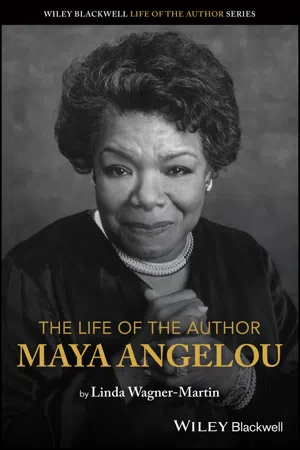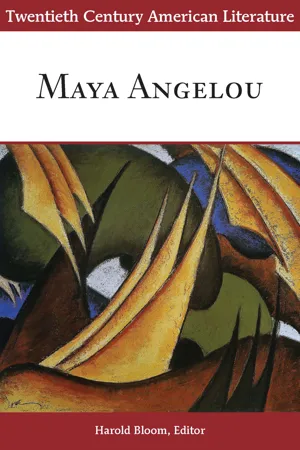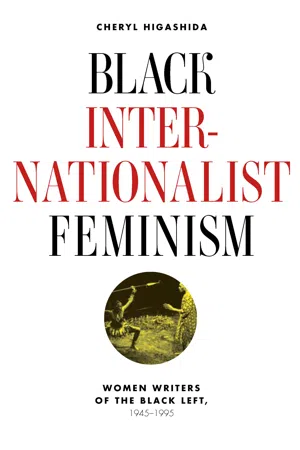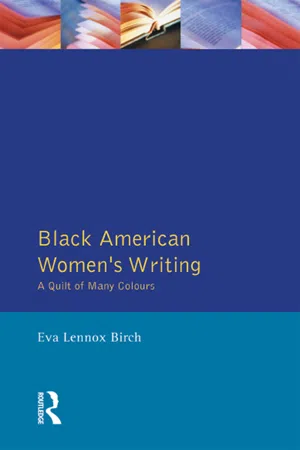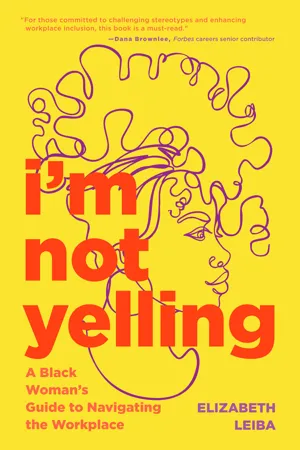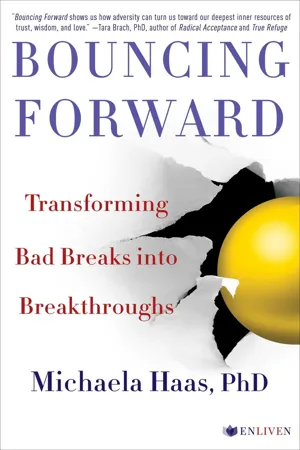Literature
Maya Angelou
Maya Angelou was an influential American author, poet, and civil rights activist known for her autobiographical works, including "I Know Why the Caged Bird Sings." Her writing often explored themes of identity, racism, and resilience, and she is celebrated for her powerful and evocative storytelling. Angelou's work continues to inspire and resonate with readers around the world.
Written by Perlego with AI-assistance
Related key terms
Related key terms
1 of 4
Related key terms
1 of 3
7 Key excerpts on "Maya Angelou"
- eBook - ePub
Maya Angelou
The Iconic Self
- Mary Jane Lupton(Author)
- 2016(Publication Date)
- Greenwood(Publisher)
Chapter 1The Life and Works of Maya Angelou
Maya Angelou: The Iconic Self examines the six autobiographical volumes of noted African American writer Maya Angelou. Although all of these volumes are distinct in style and narration, they are unified through a number of repeated themes and through the developing character of the narrator. In their scope they stretch over time and place, from Arkansas to Africa to California to New York City, from confused child to accomplished adult. With so expansive a project, Angelou is required to de-emphasize the standard autobiographical concern for the individual and to focus on her interaction with others: with the jazz singer Billie Holiday; with the actor Godfrey Cambridge; with the African American community in Ghana; with the writer James Baldwin; with the world leaders Malcolm X and Martin Luther King Jr.Maya Angelou, in having created these six autobiographies, has assured herself a prominent place in American literature. She has expanded the scope of the typical one-volume book about the self, creating a slightly fictionalized saga that covers the years 1931 to 1968—from the years of the Great Depression to the days following the death of Martin Luther King. She guides the reader through almost 40 years of American and African American history, revealed through the point of view of a strong and affectionate black woman. By opening up the edges of her narrative, Maya Angelou, like no one before her, transcends the autobiographical tradition, enriching it with contemporary experience and female sensibility.Information about Angelou’s abundant life has been recorded in numerous interviews, journals, yearbooks, prefaces, and appendices. At times there are errors or inconsistencies among these sources—the date of her first marriage, the names of awards received, the titles of plays directed, and other details. These inconsistencies arise possibly because Angelou, in her interviews, speaks eloquently but informally about her past, with no time chart in front of her, and possibly because her interviewers are so taken by her presence that they lose sight of the smaller details. The bulk of the facts presented in this chapter derive from the sources listed in the bibliography, under the category Biographical Sources. The remaining material is taken either from Angelou’s published writings or from my interview with her in June 1997. - eBook - ePub
- Linda Wagner-Martin(Author)
- 2021(Publication Date)
- Wiley-Blackwell(Publisher)
never go out of print. For the rest of her lifetime and beyond, both hardback and paper editions of her first autobiography remain for sale. Now available as e-books and audio books, Angelou’s first book appears in numerous catalogues as well as online. It is no exaggeration that thousands of libraries have a copy of this book. It is a classic.Angelou was amazed that her carefully written memoir was on bookstore shelves, and sometimes prominently displayed in bookstore windows. It seemed as if every newspaper and magazine that Angelou came across carried a review of her autobiography. And then the essays started – eventually these would run to over 100 scholarly works, all focused on I Know Why the Caged Bird Sings. For Angelou, who had never read academic literary criticism, it was amazing that professional critics had found so much to say about her story, her life, her writing. In the apt words of Joanne Braxton, one of Angelou’s best critics, “Angelou inscribes her resistance to racism, sexism, and poverty within the language, the imagery, the very meaning of her text: her truth-telling vision confronts stereotypes old and new, reversing perspective and discomforting the reader seeking safety in the conventional platitudes of the status quo. Simultaneously, I Know Why the Caged Bird Sings’s profoundly moral stance challenges its audience to confront the contradictions of life and to create positive change, beginning with oneself and with one’s community.”Braxton was one of the earliest critics to praise Angelou’s double narrative voices – the adult who sees events retrospectively and the “girlchild,” the “Maya voice,” or young Marguerite – and the fact that such a seemingly effortless double vision allows Angelou to comment on both history and memory. “To borrow from the blues idiom of Ralph Ellison, the mature autobiographer consciously fingers the jagged edges of her remembered experience, squeezing out a tough lyric of black and blue triumph. Maya Angelou … emerges miraculously through a baptismal cataract of violence, abuse, and neglect.”Much critique of both Angelou’s prose and poetry speaks to its basis in speech, in African American speech. Angelou frequently called herself a “recorder.” She also said:“I write for the Black voice and any ear which can hear it. I search for sound, tempos, and rhythm to ride through the vocal cord over the tongue, and out of the logic of Black people. I love the shades and slashes of light. Its rumblings and passages of magical lyricism… - Harold Bloom, Harold Bloom(Authors)
- 2022(Publication Date)
- Chelsea House(Publisher)
Super-achievers like Maya Angelou usually write autobiographies, sometimes more than one. (W. E. B. DuBois, for example, wrote his first one in his late twenties, another on his fortieth birthday, another on his fiftieth, and so on.) All autobiographies ultimately have a theme and make a statement. In Maya Angelou's latest book, the theme is twofold: creativity and engagement. We learn by her example the value of both an artistic and an activist lifestyle. The real story of Maya Angelou is the story of a plain, black, six foot tall girl, a child of the American South, who has lived triumphantly and is telling us how she "got ovah."Entry Author: Ikerionwu, Maria K. Mootry.Source: Phylon, March 1983, pp. 86–87.Passage contains an image
The Song of a Caged Bird: Maya Angelou's Quest After Self-Acceptance
1973In (the) primal scene of childhood which opens Maya Angelou's I Know Why the Caged Bird Sings, the black girl child testifies to her imprisonment in her bodily prison. She is a black ugly reality, not a whitened dream. And the attendant self-consciousness and diminished self-image throb through her bodily prison until the bladder can do nothing but explode in a parody of release (freedom).In good autobiography the opening, whether a statement of fact such as the circumstance of birth or ancestry or the recreation of a primal incident such as Maya Angelou's, defines the strategy of the narrative. The strategy itself is a function of the autobiographer's self-image at the moment of writing, for the nature of that self-image determines the nature of the pattern of self-actualization he discovers while attempting to shape his past experiences. Such a pattern must culminate in some sense of an ending, and it is this sense of an ending that informs certain earlier moments with significance and determines the choice of what experience he recreates, what he discards. In fact the earlier moments are fully understood only after that sense of an ending has imposed itself upon the material of the autobiographer's life. Ultimately, then, the opening moment assumes the end, the end the opening moment. Its centrality derives from its distillation of the environment of the self which generated the pattern of the writer's quest after self-actualization.- eBook - ePub
Black Internationalist Feminism
Women Writers of the Black Left, 1945-1995
- Cheryl Higashida(Author)
- 2011(Publication Date)
- University of Illinois Press(Publisher)
7Caged Bird and “On the Pulse of the Morning” situate Angelou squarely within a U.S. national(ist) framework. Caged Bird, about Angelou’s childhood in Arkansas, Missouri, and California, is often read as an affirmation of American self-reliance and individual fulfillment.8 Indeed, crucial to the book’s success was the fact that it was published just a few years before the development of U.S. multicultural nationalism in the wake of the civil rights and Black Power movements and the mobilization of other racial groups and women, lesbians, and gays. The radical demands of these movements for economic and social justice were met with a multicultural Americanism that the state supported in an effort to shore up its legitimacy while co-opting the militancy of the new social movements.9 Multiculturalism emerged as a double-edged ideology that revised Eurocentric and patriarchal formulations of citizenship—for example, by incorporating works like Caged Bird into school curricula nationwide—while mystifying the intensification of structural racism evidenced by deindustrialization, deregulation, capital light, and the evisceration of welfare. A multiculturalist text such as “On the Pulse of the Morning” (which, like Caged Bird, has become a staple of primary and secondary school reading lists) expanded the racial, ethnic, sexual, and classed norms of nationhood to encompass “the Asian, the Hispanic, the Jew / The African, the Native American, the Sioux”; “The Gay, the Straight, the Preacher, / The privileged, the homeless, the Teacher.” And in combining these distinct and disparate names within its nationalist rhyme scheme, the poem reaffirmed ideologies of American progress, diversity, and inclusion that occluded forms of political protest and affiliation that go beyond and fundamentally challenge the nation-state.10 - eBook - ePub
- Eva Lennox Birch(Author)
- 2016(Publication Date)
- Routledge(Publisher)
5 His output of over 150 publications of tales for and about poor boys who make good, provided male role models for the aspiring working-class boy. Angelou adapts this tradition to show that girls too can have their share of adventure and success, and, what is more, it can happen to a black girl. Sexism, racism and classism are all ingredients in Angelou’s life, and she beats them all. This is one good reason why white women also enjoy her autobiographies.Now that autobiographical writing has been accorded the ‘respectability’ of critical analysis, and is no longer seen simply as useful source material for scholars, the literary skills which shape Angelou’s writing are afforded serious attention. One significant feature of her craftwork is in her selection and patterning of her life experiences, which she then weaves into an inspirational fabric of survival:All my work, my life, everything is about survival. All my work is meant to say ‘You may encounter many defeats, but you must never be defeated’. In fact, the encountering might be the very experience which creates the vitality and the power to endure.6Her autobiographies illustrate her personal survival, as well as presenting her as an exemplar of the possibilities open to all who nourish the indomitable spirit of their African ancestors. Her insistence upon the potential for personal, as well as conscious collective, action against the social cage within which black Americans had been constrained, must be seen within the political context of white power. Within a multi-ethnic society where whites are politically dominant, a white citizen’s social origins might be given significance in an hierarchical class system, but her skin colour is irrelevant. For blacks in such a society, colour is the dimension marking them off as The Other’. Regina Blackburn writes in an essay:Most African women autobiographies confess to one incident in their early lives that awakened them to their color; this recognition scene evoked an awareness of their blackness and its significance, and it had a lasting influence in their lives.7Richard Wright’sBlack Boydemonstrates how such a ‘recognition scene’ as a young man aroused in him an all-consuming rage, and a determination to smash and destroy the cage of entrapment. In the recognition scene in I Know Why the Caged Bird Sings, when Angelou’s grandmother is vilified and taunted by the obscenity of white children, Angelou claims that the experienced humiliation gave way to a feeling of triumph. In her reconstruction of that event, Angelou rejoices in a victory as Momma Henderson retains her dignity. Angelou seems to be less preoccupied than her black male counterparts with smashing angrily at the bars of the racial cage. Her concern is to explore the cage in order to salvage the means to transcend and escape. Like Wright’s Bigger Thomas inNative Son - eBook - ePub
I'm Not Yelling
A Black Woman's Guide to Navigating the Workplace
- Elizabeth Leiba(Author)
- 2022(Publication Date)
- Mango(Publisher)
Movement.Each experience was recounted exactly as it was—a milestone in the journey of her life. There was no regret. There was no shame. There was no silence after those early years. The first book in the seven-part autobiographical series about her life is called I Know Why the Caged Bird Sings . And the analogy admirably expresses the importance of self-expression in creating a sense of freedom. Words can be a lever to escape the feeling of oppression or entrapment. Maya Angelou used her lived experiences and the words that described them to create meaning. She lived up to her potential and empowered herself and everyone who would later read her works.I must stop the urge to constantly tell my children to be quiet. Since I was very young, like many of us, I was instructed to stay in my lane and bite my tongue. As soon as we left the house, we were warned by our parents not to embarrass them. We were expected to behave in public spaces and not raise our voices to attract attention to ourselves. Granted, our parents had had their own experiences with the world that made them pass these lessons down. Unfortunately, this lesson has made many of us hesitant to be bold and outspoken in telling our stories. We have been reluctant to use the power of our voices and speak our own truths loudly and proudly.Historically, the legacy and tradition of storytelling is a strong one across the African diaspora. And as for the descendants of kidnapped African slaves, their stories became a way to pass down the truth and preserve knowledge. But that truth was also a double-edged sword. In African tradition, stories related by griots and elders were passed down from generation to generation, telling about lineage, power, and a history of greatness. Here in America, being too bold in how you told your story and how you spoke to others that didn’t look like you, or even learning to read and write, could get you killed. So that tradition and legacy were stolen. Reconciling generational trauma associated with that reality can be painful; however, leveraging the power of our true narratives is essential to reclaiming our power and finding our individual voices. - eBook - ePub
Bouncing Forward
The Art and Science of Cultivating Resilience
- Michaela Haas(Author)
- 2015(Publication Date)
- Atria/Enliven Books(Publisher)
Whenever she received an award, Maya Angelou thanked everybody who had helped her—God, teachers, rabbis, priests—but especially her late grandmother, Annie Henderson. Maya Angelou’s eyes welled up when she thought of this indomitable woman who instilled in her a strong sense of self-worth. Her grandmother, the only black woman to run her own store in Stamps, was a God-fearing, robust, dignified force unto herself. While she did not cuddle Maya and was prone to punish misdeeds with severe beatings, she impressed upon her granddaughter a strong sense of right and wrong, the trust that God would protect her, and the wisdom of tolerance. And yet, Maya had to watch helplessly when her grandmother, her protector, could not protect herself from the humiliation and racial slurs of white children who would storm her grocery store. Maya responded by throwing rocks at them, but eventually she understood that the rocks only hardened, rather than extinguished, her rage.Through these experiences, Maya transformed from a quiet, submissive victim to a more outspoken, tenacious activist. At age seventeen, when she was told that the streetcar operators of San Francisco didn’t accept blacks, she sat in their reception area every day for three weeks, ignoring nasty racial slurs, until she was given an application. Eventually, she made her decision to no longer stand by “with no chance of defense,” but to take up her weapon of wisdom: a pen.Dr. Angelou has become a “modern-day Shakespeare” for millions, her books a trusted source of wisdom through which those who suffer find kinship.Trying to make a better world
Carrying this message of triumph into the world was exactly why Dr. Angelou kept writing, speaking, and giving. Up to the last months of her life, she filled her schedule with teaching, empowering women, and receiving awards. “I’m a teacher who writes, not a writer who teaches,” she defined herself. For more than three decades, this woman who never attended college taught American studies at Wake Forest University in Winston-Salem, North Carolina. Thirty universities from all over the planet awarded her honorary titles, and she celebrated the status by asking even close friends to address her as Dr. Angelou. “I have created myself,” she said proudly. The experience of the crucial difference supportive adults made in Maya’s life when she was a withdrawn child impressed on her the lifelong commitment to act as a charismatic adult for others. “I would like to be of use. Anyone who can’t be of use is useless. I’m not here for no reason. I am here for a purpose. So, I am a member of different organizations, trying to make a better world. I am of use, yes, people can count on me. I will do the best I can.”
Index pages curate the most relevant extracts from our library of academic textbooks. They’ve been created using an in-house natural language model (NLM), each adding context and meaning to key research topics.
Explore more topic indexes
Explore more topic indexes
1 of 6
Explore more topic indexes
1 of 4

